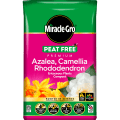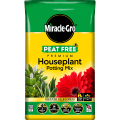Did you know that some of these colourful and attractive beauties can actually be harmful to you or your pets’ health? The following table shows images of the plant, which part is harmful and how it is harmful (symptoms).
| Flower | Part that is harmful | Symptoms |
|---|---|---|
| Autumn Crocus | Whole plant | Humans: Abdominal pain, nausea, vomiting leading to convulsions, cardiovascular collapse. Animals: dermatitis, nervous excitement, diarrhoea, bloody vomiting, shock, organ damage and oral irritation. |
| Bluebells | Whole plant | Humans: Abdominal pain, vomiting, diarrhoea, nausea and slow heart rate. Animals: Abdominal pain, vomiting, diarrhoea. |
| Cherry laurel | Leaves and fruit pips | Humans: Oxygen starved from the central nervous system. Animals: Abdominal tenderness, vomiting, diarrhoea. |
| Daffodils | Whole plant | Humans: Stomach upset, lasting several days. Animals: Abdominal tenderness, vomiting, diarrhoea, over-salivating, temperature and lethargy. |
| Deadly nightshade | Whole plant | Humans: Dryness in the mouth, thirst, difficulty in swallowing and speaking, blurred vision from the dilated pupils, vomiting, excessive stimulation of the heart, drowsiness, slurred speech, hallucinations, confusion, disorientation, delirium and agitation, coma and convulsions often precede death. Animals: Narcosis and paralysis. |
| Delphiniums | Whole plant | Humans: Abdominal pain, nausea, vomiting and muscular spasms. Animals: Harmful if eaten in large quantity |
| Devils ivy | Whole plant | Humans: Skin/eye irritation, stomach cramps and vomiting. Animals: Dermatitis, mouth irritation, upset stomach, diarrhoea, seizures, loss of balance. |
| False jasmine | Whole plant | Humans: Weakness, pupil contraction, impaired vision, severe giddiness and depressed respiration. Animals: Convulsions. |
| Foxglove | Whole plant | Humans: Slow or irregular heart rate, abdominal pain, nausea, headache, weakness, rash, blurred vision, convulsions. Animals: Heart arrhythmia, weakness, diarrhoea and vomiting. |
| Hyacinth | Whole plant | Humans: Rash, inflammation, blisters, vomiting, diarrhoea and stomach cramps. Animals: Stomach upset, vomiting, diarrhoea and lethargy. |
| Laburnam tree | Whole plant | Humans: Intense sleepiness, vomiting, convulsive movements, unequally dilated pupils, severe diarrhoea and coma. Animals: Nausea and vomiting. |
| Leyland cypress | Whole plant | Humans: Skin irritation. Animals: Diarrhoea, loss of appetite and weakness. |
| Lily of the valley | Whole plant | Humans: Dermatitis, digestive trouble, nausea, vomiting and drowsiness. Animals: Slow heart rate, vomiting, diarrhoea, seizures and severe heart arrhythmias. |
| Lupin | Seeds | Humans: Nervousness, digestive problems, sleepiness, slowed heart rate. Animals: Gastrointestinal upset, salivation.
|
| Morning glory | Whole plant | Humans: Nausea, vomiting, diarrhoea, allergic reactions. Animals: Stomach upset, vomiting, diarrhoea, severe agitation. |
| Passion flower | New young fruits | Humans: Stomach upset. Animals: Vomiting. |
| Peace lily | Whole plant | Humans: Nausea, diarrhoea, salivation, vomiting. Animals: Pawing at mouth, drooling, foaming, vomiting. |
| Rhododendron | Whole plant | Animals: Projectile vomiting, abdominal pain, diarrhoea, constipation and slow heart rate. |
| Tulip | Whole plant | Humans: Dizziness, nausea and abdominal pain. Animals: Drooling, nausea, vomiting, difficulty breathing. |
| Wisteria | Whole plant | Humans: Nausea, vomiting, cramp and diarrhoea. Animals: Vomiting, diarrhoea, depression. |
Tips to keep you, others and your pets safe while enjoying your garden
- Always wear gloves when handling plants.
- Teach young children not to play with plants or put anything they find in the garden in their mouth, that they should check with an adult first.
- Position harmful plants in a place where your pet can't get to it.
- If you suspect yourself, a pet or anybody else has ingested a plant or part of, seek medical advicestraight away.
- Make sure any toxic plants dug up, or chippings, are disposed of in the correct way.
- Read plant labels when purchasing, to check if they have any toxicity hazards.








